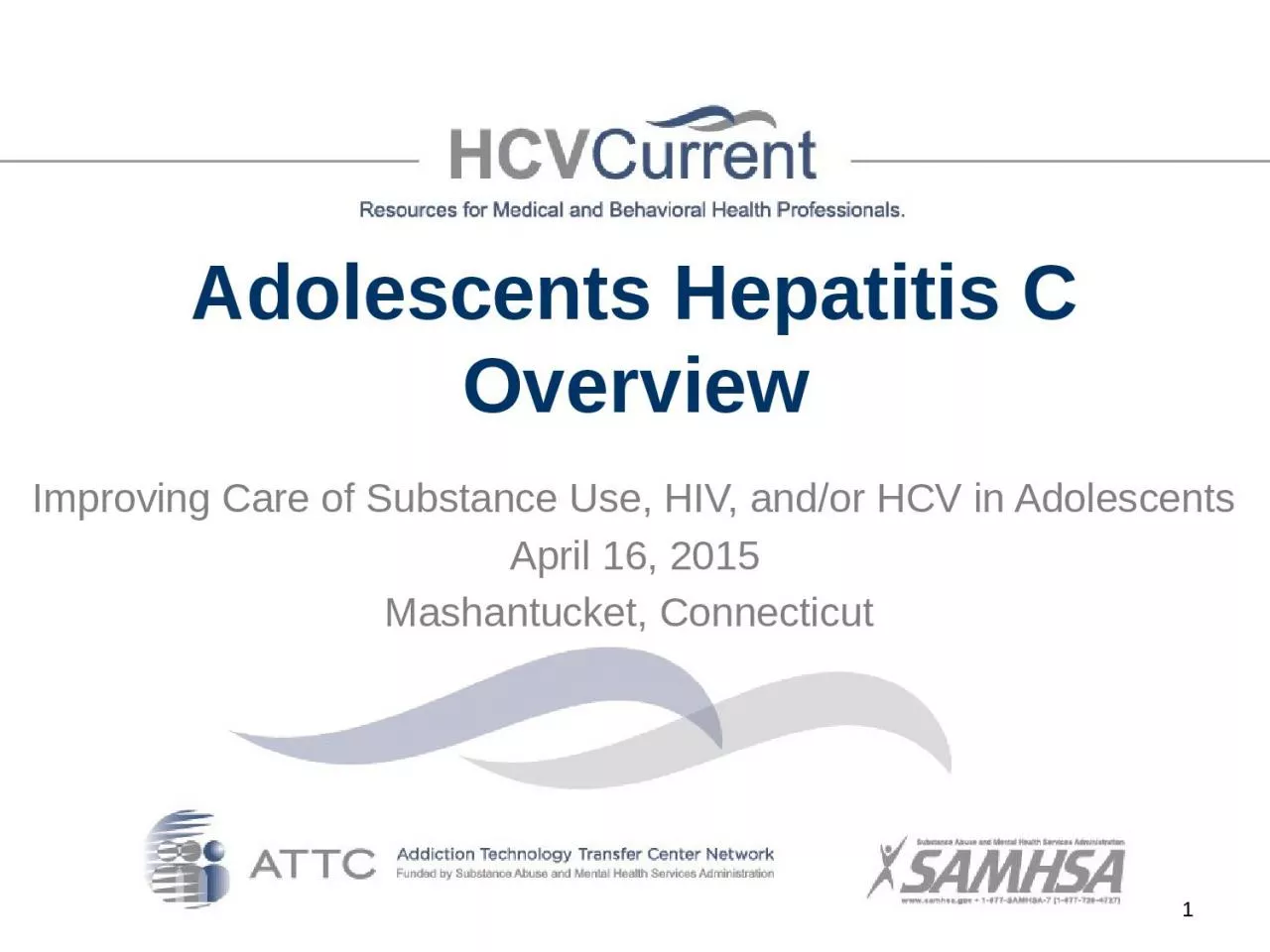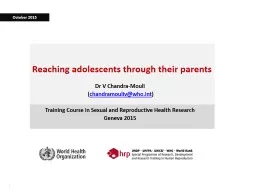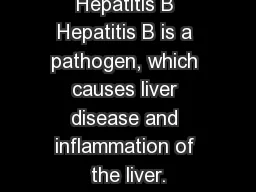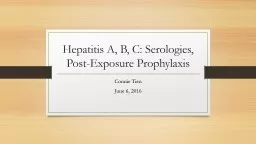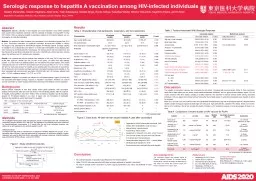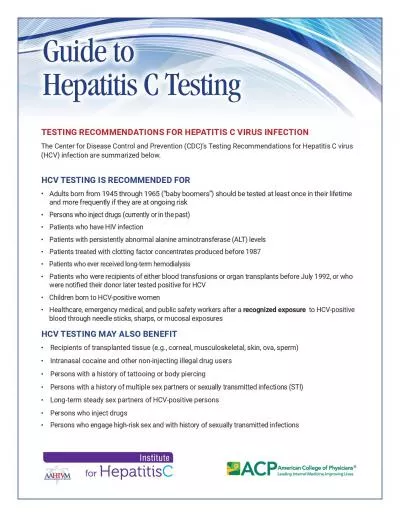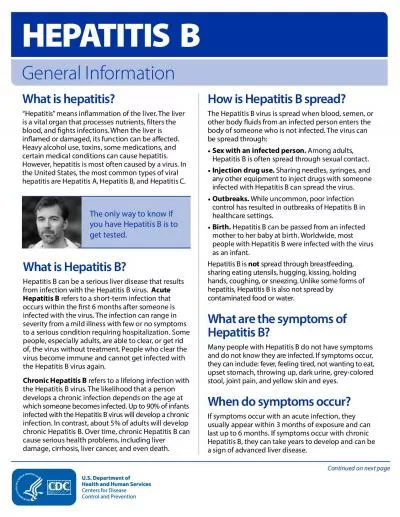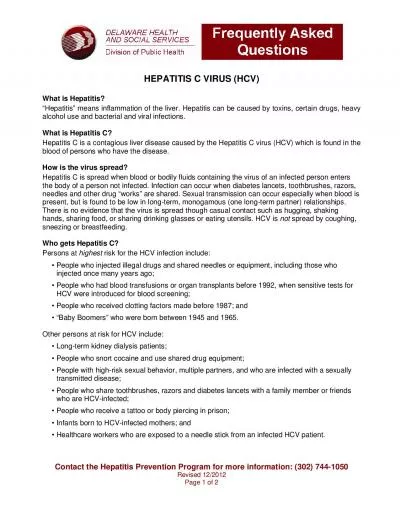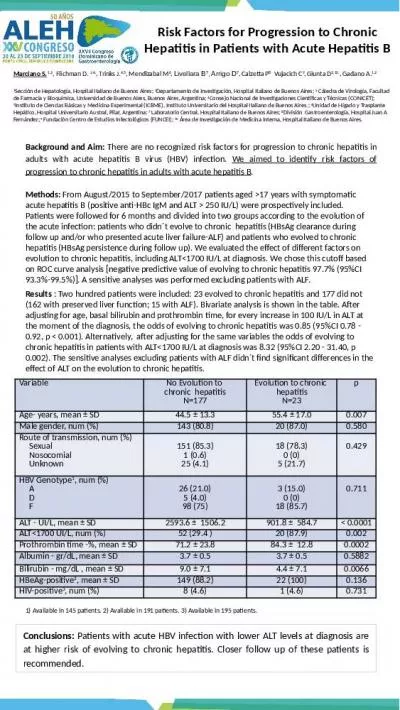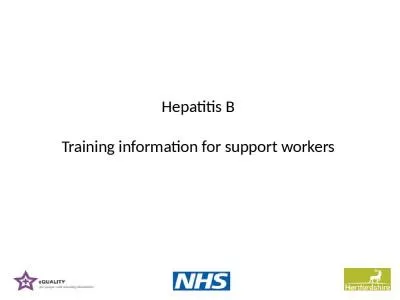PPT-Adolescents Hepatitis C Overview
Author : Savageheart | Published Date : 2022-08-03
Improving Care of Substance Use HIV andor HCV in Adolescents April 16 2015 Mashantucket Connecticut 1 Adolescents and HCV Younger IDUs tend to have higher levels
Presentation Embed Code
Download Presentation
Download Presentation The PPT/PDF document "Adolescents Hepatitis C Overview" is the property of its rightful owner. Permission is granted to download and print the materials on this website for personal, non-commercial use only, and to display it on your personal computer provided you do not modify the materials and that you retain all copyright notices contained in the materials. By downloading content from our website, you accept the terms of this agreement.
Adolescents Hepatitis C Overview: Transcript
Download Rules Of Document
"Adolescents Hepatitis C Overview"The content belongs to its owner. You may download and print it for personal use, without modification, and keep all copyright notices. By downloading, you agree to these terms.
Related Documents

